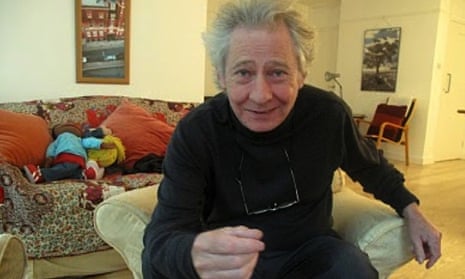On 16 February 1963, my friend Mike Lesser, who has died aged 71, was one of the “Spies for Peace” who broke into the then secret regional seat of government (RSG-6) near Reading in Berkshire. The result, that Easter, was the publication of the pamphlet “Danger! Official Secret! RSG-6”, which revealed – with phone numbers and names – the administrative network of underground bunkers prepared for a nuclear strike. RSG-6 was besieged by Campaign for Nuclear Disarmament Aldermaston marchers, Vanessa Redgrave declaimed from the pamphlet, and the activists were officially denounced as traitors.
Mike, scientist and anarcho-communist, was then the youngest member of the Committee of 100 – non-violent campaigners against nuclear weapons – and had already served a jail term in Wormwood Scrubs prison following a Whitehall protest. After the RSG-6 break-in he spent six months hiding out on the German North Sea coast. None of the Spies for Peace was ever charged, but it would be 2010 before Mike spoke of his role.
In the mid-1960s, Mike developed a passionate relationship with International Times (IT), the first London underground paper, co-producing an issue from Paris in 1968 following the May protests. Mike’s commitment to IT was lifelong. In 2009 he created an online archive and was instrumental in IT’s online revival. He saw IT as providing ready access for poets, polemicists, artists, musicians and video-vigilantes.
Mike’s mother, Nellie (nee Jones), was Irish Catholic and his father, Jack, was Jewish and ran a plastics factory. Born in Kilburn, north-west London, during an air raid, Mike was educated at Charterhouse school in Godalming, Surrey, until, at 15-year-old, he was expelled, with his autism a contributory factor. He resented the idea that the condition was a disability, arguing that it could be “an incredibly useful asset for humanity”. His life story, he argued, contradicted the idea that the condition limited his possibilities.
Mike’s approach was fuelled by emotion rather than any logic of compliance. He said that Wormwood Scrubs had been his university. His study of mathematical philosophy and psychology led him to research models of the mind, and insights into autism via computers, at Nasa’s Goddard Jet Propulsion Laboratory in Washington DC in 1978, and at the Rutherford Appleton Laboratory in Oxfordshire in 1980.
In the 1980s, after directing an industrial research company, he worked at the Institute of Ecological Research, at Cranfield University, Bedford. He and Prof Peter Allen co-authored Evolutionary Theories of Economic Change (1991). The Global Dynamics of Cellular Automata (1992), co-written with Andrew Wuensche, followed. He contributed to Coming Out Asperger: Diagnosis, Disclosure and Self-confidence (2005) and co-founded, with the book’s author and editor, Dinah Murray, the Autism and Computing group.
Mike’s slogan “freedom is a career” joined the graffiti of north Kensington featured in Roger Perry’s The Writing on the Wall (1976). Prone to volcanic displays of temper, perpetually smoking industrial quantities of recreational drugs, Mike was also obsessively loyal, magnanimous and fearless.
He is survived by his sister, Barbara, and his nephew, Nicholas.
